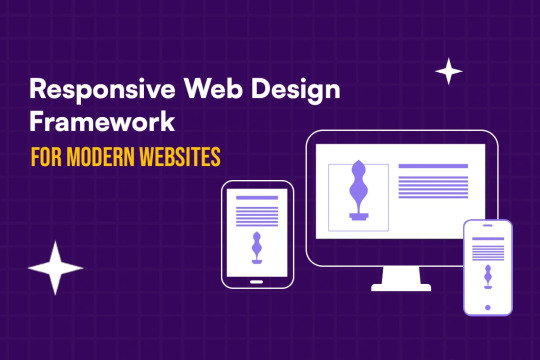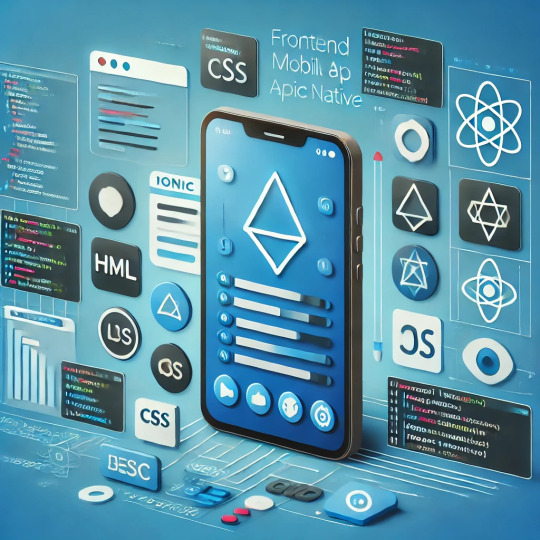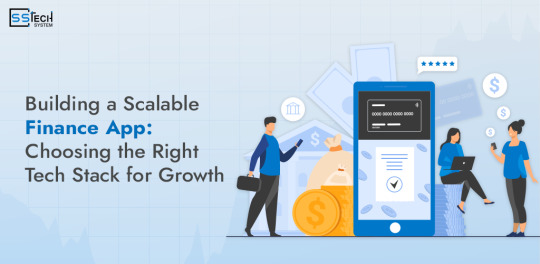#React Native framework
Explore tagged Tumblr posts
Text
Top 10 Apps Built With React Native Framework
Explore the impact of React Native Framework on mobile app development, featuring top apps like Facebook, and learn how its cross-platform capabilities boost performance.
#React Native App development#React Native Framework#cross-platform development#developer of React Native
1 note
·
View note
Text

Flutter and React Native are both popular frameworks for building mobile applications. Flutter is a cross-platform framework developed by Google that uses a single codebase to build high-performance, visually appealing apps for both Android and iOS. It has a rich set of customizable widgets, making it easy to create complex UI designs. Flutter also has a hot reload feature that allows developers to see real-time changes, making the development process faster. React Native is a cross-platform framework developed by Facebook that allows developers to build high-quality apps for both iOS and Android. React Native uses JavaScript and supports third-party plugins, making integrating with other libraries and tools accessible. It also has a large and active community, providing developers with extensive documentation, support, and pre-built components. Ultimately, the choice between Flutter and React Native depends on the project's specific needs. Framework that provides a fast development process and excellent performance, then Flutter may be the best choice. The framework that has a large community and supports a wide range of third-party libraries, then React Native may be a better fit.
1 note
·
View note
Text
🔄 React vs. React Native: Unveiling the Major Contrasts! 🚀📱
Dive into our video to distinguish between these powerful frameworks and discover which one suits your development needs. 💡⚙️
3 notes
·
View notes
Photo

As we enter 2023, the debate over the best iOS development framework continues to rage on. React Native and Swift are two popular options, each with its own set of pros and cons. So which one is the best choice for iOS development in 2023? The answer, as with many things in technology, is "it depends." It depends on the specific needs of your project, the experience level of your development team, and your overall goals for the app. Ultimately, the decision between React Native and Swift should be made based on a thorough understanding of the strengths and weaknesses of each framework.
https://www.algoworks.com/blog/react-native-vs-swift-for-ios-app-development/
3 notes
·
View notes
Text
Flutter vs React Native: eCommerce App Choice
Choosing between Flutter and React Native for eCommerce app development can be challenging. This blog compares flutter and react native frameworks, highlighting their strengths, ease of development, performance, and suitability for online stores.
Readers will find insights on cost, user experience, and long-term benefits, helping them decide which technology suits their business needs. Whether prioritizing faster development, better UI, or scalability, this guide provides clarity on making an informed choice for a successful eCommerce app.
0 notes
Text
Top Frameworks for Cross-Platform App Development in 2025
The best cross-platform frameworks in 2025 will help you develop apps that run smoothly on all platforms while saving time, cost, and resources.

#cross-platform app development framework#native ARM code#nativescript vs react native#custom website development service#mobile applications developers#web developer freelancers
0 notes
Text
Flutter vs. React Native: Best Framework for Your Cross-Platform App

Choosing the right framework is critical to the success of your app. In the world of cross-platform development, React Native and Flutter stand out as the go-to choices for building apps efficiently for Android and iOS from a single codebase. Both frameworks offer unique advantages, but which one is best suited for your project? Let’s dive in to help you decide.
Understanding React Native
React Native, created by Facebook in 2015, enables developers to create mobile applications using JavaScript. By extending the popular React framework for web development to mobile platforms, React Native simplifies development without sacrificing a native-like user experience.
Key Features of React Native:
Reusable Codebase: Write once, run on both Android and iOS with minimal adjustments.
Native Rendering: Uses native UI components, ensuring apps look and feel like true native apps.
JavaScript Expertise: Leverages an already widely used programming language, reducing the learning curve for teams.
Ideal Use Cases:
React Native excels in developing apps that prioritize functionality, such as:
Social Media Apps: Facebook and Instagram are prime examples.
E-commerce Apps: Platforms focusing on core features and fast iteration.
MVPs for Startups: Quick time-to-market with robust functionality.
When it comes to custom mobile app development, React Native provides a practical solution for businesses aiming to deliver apps across multiple platforms while optimizing time and costs.
Flutter: Google’s Vision for Cross-Platform Apps
Launched in 2017, Flutter is Google's open-source framework for creating visually stunning and highly performant apps. Powered by Dart, Flutter is designed for developers who value consistent design and seamless performance across platforms, including mobile, web, and desktop.
Key Features of Flutter:
Rich Widgets Library: A customizable set of widgets allows precise control over UI design.
Hot Reload: Real-time changes boost productivity during development.
Platform Independence: Build apps that scale beyond mobile to web and desktop platforms.
Ideal Use Cases:
Flutter shines in applications requiring advanced graphics and consistency, such as:
Graphically Intense Apps: Complex animations and interactive designs.
Multi-Platform Apps: Apps needing a unified experience across devices.
Startups with Design-First Focus: Beautiful, responsive apps built efficiently.
For developers focused on web app development, Flutter's multi-platform capabilities make it an excellent choice for creating seamless digital experiences across devices.
What Are the Key Differences Between Flutter and React Native?
When deciding between Flutter and React Native, it's essential to understand their key differences to choose the right framework for your project.
1. Programming Language
React Native uses JavaScript, making it a natural choice for teams with web development experience.
Flutter uses Dart, which offers robust features but has a smaller developer community.
2. UI/UX Customization
React Native relies on native components, providing a consistent platform look but less flexibility for custom UI designs.
Flutter uses its widget-based system, enabling highly customizable and visually consistent designs.
3. Performance
React Native uses a JavaScript bridge, which may impact performance in graphics-heavy apps.
Flutter compiles directly to native code, ensuring better performance for complex animations and high-performance apps.
4. Multi-Platform Support
React Native focuses on mobile, with third-party tools enabling web functionality.
Flutter natively supports mobile, web, and desktop, making it a more versatile choice.
Advantages and Disadvantages of React Native and Flutter
When choosing between React Native and Flutter, understanding their pros and cons can help streamline your decision for mobile app development.
React Native: Pros and Cons
Advantages
Large Community Support: Built on JavaScript, React Native benefits from a vast developer community and numerous libraries.
Faster Development: If you’re familiar with JavaScript and React, React Native allows faster transitions into mobile app development.
Cost Savings: A single codebase works for both iOS and Android, reducing resources.
Disadvantages
Performance Issues: May struggle with complex animations or graphics due to the JavaScript bridge.
Limited Customization: Relies on native components, limiting UI design options.
Dependency on Third-Party Libraries: Advanced features depend on third-party tools, which can cause delays.
Flutter: Pros and Cons
Advantages
Superior Performance: Compiles directly to native code, improving speed, especially for animations.
Highly Customizable UI: Uses widgets for advanced and flexible UI design.
Single Codebase Across Platforms: Works for mobile, web, and desktop development.
Disadvantages
Larger File Size: Flutter apps consume large amount of storage
Limited Dart Expertise: Dart is less common than JavaScript, making skilled developers harder to find.
Still Maturing for Web Support: Flutter’s web capabilities are still evolving, with some performance and compatibility challenges.
Future of Cross-Platform Development
The demand for cross-platform frameworks continues to grow, driven by the need to build apps efficiently for multiple platforms. React Native and Flutter are both evolving rapidly, supported by major tech companies like Facebook and Google. While React Native leads in market share, Flutter’s rich UI capabilities and growing popularity make it a serious contender.
React Native or Flutter : Which one to pick
The choice between Flutter and React Native depends on your project goals, team expertise, and app requirements. Both frameworks are powerful tools that cater to different needs, ensuring you can deliver an excellent user experience.
#web development#app developing company#web app development#Flutter vs. React Native#best app development framework
0 notes
Text
#best react native app development services#Best React Native Framework#Dependency injection in react native#effective react native state management strategies#React Native developer requirements#React Native development process#React Native development tools#React native installation step by step guide#React Native performance optimization#Tools Required for RN Development#Top applications using react native#top react native app development company
0 notes
Text

Discover the best Responsive Web Design Framework to create stunning, modern websites that adapt seamlessly across all devices and enhance user experience.
1 note
·
View note
Text
Frontend Development for Mobile Apps with Frameworks like Ionic or React Native

In today's fast-paced digital world, businesses are increasingly seeking efficient ways to build high-quality mobile apps. Frontend development plays a crucial role in creating responsive and user-friendly mobile applications. Two popular frameworks for mobile app frontend development are Ionic and React Native. Both frameworks allow developers to build cross-platform apps, reducing development time and cost. In this article, we’ll explore how these frameworks work and the benefits they offer for mobile app development.
What is Frontend Development in Mobile Apps?
Frontend development focuses on the user interface (UI) and user experience (UX) of an application. For mobile apps, this involves creating interactive elements like buttons, menus, and layouts that users interact with. With the increasing demand for mobile apps, businesses need to deliver seamless user experiences across different platforms, including iOS and Android. This is where frameworks like Ionic and React Native come in.
Why Choose Cross-Platform Frameworks for Mobile App Development?
Building separate apps for iOS and Android can be time-consuming and expensive. Cross-platform frameworks like Ionic and React Native allow developers to write a single codebase that works on both platforms. This not only speeds up the development process but also reduces maintenance efforts. Here are the benefits of using these frameworks:
Cost Efficiency: With a single codebase, companies save money on development and updates.
Faster Development: Developers can launch apps quicker by writing code once and deploying it across platforms.
Consistent UI/UX: Ensures a unified look and feel on both iOS and Android devices.
Ionic Framework for Mobile App Development
Ionic is an open-source framework that uses web technologies like HTML, CSS, and JavaScript to build mobile apps. It's built on top of Angular and integrates well with Apache Cordova, enabling access to native device features like the camera and GPS.
Key Features of Ionic:
Cross-Platform Compatibility: Build apps that run smoothly on both iOS and Android.
Pre-Built UI Components: Ionic offers a wide range of ready-made components, speeding up the design process.
Native Plugin Integration: Access native device functionalities through plugins, without writing native code.
Web View: Apps are rendered in a web view, making it easier for web developers to transition to mobile app development.
Advantages of Ionic:
Perfect for developers familiar with web technologies.
Large community support with extensive documentation.
Fast prototyping for MVP (Minimum Viable Product) development.
React Native for Mobile App Development
React Native, developed by Facebook, is another powerful framework for building cross-platform mobile apps. Unlike Ionic, which uses web technologies, React Native allows developers to write native code for both platforms using JavaScript. This provides better performance compared to web-view-based frameworks.
Key Features of React Native:
Native Components: React Native renders real native components, ensuring faster performance.
Hot Reloading: Developers can instantly see changes without recompiling the entire app.
JavaScript and React: Leverages JavaScript and the popular React library, making it easier for web developers to adopt.
Third-Party Plugins: React Native has a rich ecosystem of third-party plugins for extended functionality.
Advantages of React Native:
Near-native performance for both iOS and Android apps.
Reusable components across platforms.
Large developer community and regular updates from Facebook.
Ionic vs React Native: Which One to Choose?
Choosing between Ionic and React Native depends on the specific needs of your project. Here are some points to consider:
Performance: If performance is critical and you need a near-native feel, React Native is the better option.
Development Speed: For rapid prototyping and building MVPs, Ionic is faster due to its pre-built UI components and web-based architecture.
Familiarity with Technologies: If your team is experienced with Angular, Ionic is an easier choice. If they are more familiar with JavaScript and React, then React Native would be the better option.
The Future of Mobile Frontend Development
The demand for cross-platform mobile apps is growing, and frameworks like Ionic and React Native are at the forefront of this trend. As technology evolves, these frameworks continue to improve, offering better performance, more features, and easier integrations with backend systems. The future of frontend mobile development lies in the ability to create high-performance, cost-effective, and user-friendly apps that work seamlessly across all devices.
Conclusion
Both Ionic and React Native are powerful tools for frontend mobile app development. Choosing the right framework depends on your project’s goals, timeline, and the expertise of your development team. If you're looking to develop a mobile app that offers fast performance, cost efficiency, and a seamless user experience, either of these frameworks can be a great choice. Explore both options and see which fits your needs best for building high-quality mobile apps.
#Frontend mobile app development#Ionic framework for mobile apps#React Native for cross-platform apps#Cross-platform mobile app development#Mobile app frameworks#JavaScript for mobile apps#Ionic vs React Native#Mobile UI/UX development#ahextechnologies#reactnative#ionic
0 notes
Text
Finance App Development - SSTech System

Designing a scalable Finance App is essential in the constantly evolving financial technology world to ensure sustainability and meet the needs of many users in the future. The need for efficient and flexible Finance App Development strategies increases due to the need for reliable and secure financial services.
Thus, this detailed article focuses on selecting the right tech stack to create a sustainable finance app and will discuss the key aspects and technologies related to mobile finance app development. According to the report, 97% of millennials use mobile banking apps, and 89% of customers use them for financial management.
Understanding the basics of finance app development
Finance app development can be anything from a simple mobile finance app to a complicated trading application. Those programs require paramount security, performance, expansion, and friendliness of the interfaces. It is essential because developers have to guarantee solid encryption and safe authentication methods, mainly due to the high level of security financial data implies and compliance with regulations.
The elements that define a specialized finance app
User authentication and authorization: Users only access the information that they are allowed to and this can only be done by logging in to the system.
Data encryption: This includes the protection while the information is in transit, often described as encryption in flight and also when data is stored, or in other words, encryption at rest.
API Integration in finance apps: Integration with numerous financial services and outside vendors, API in financial apps.
Real-time data processing: A stable data feed is a must-have for mobile trading applications for stocks and artificial trading applications.
Choosing the right tech stack for finance app development
A basic first stage in the creation of a mobile financial app is choosing the suitable tech stack. The scalability, speed, and security of the app would be much affected by the technology choices. We’ll go over many tech stacks here and their fit for building finance apps.
1. Backend Technologies
Node.js for finance app
Node.js is fit for real-time applications like banking apps as its event-driven design is well-known. Crucially for the development of mobile banking apps and trading apps, it can effectively manage many concurrent connections. Node.js also makes it possible to employ JavaScript on the client and server sides, therefore streamlining the building process.
Python stack
Among developers, Python is a beloved tool because of its simplicity and readability. Excellent options for Finance App Development, the Django and Flask frameworks provide scalability and strong security measures. Additionally, perfect for AI trading apps and investment app development is Python’s vast data analysis and machine learning packages.
Java stack
Java offers a strong and safe space for applications in building finances. The whole ecosystem of the Spring Framework guarantees scalability and dependability by supporting enterprise-level projects. Applications with extensive business logic and great performance will find Java especially appropriate.
2. Frontend Technologies
React native finance apps
React Native lets developers create Cross-platform financial app development once and use them on both iOS and Android devices, therefore saving coding effort. While preserving great performance and a natural appearance and feel, this drastically lowers development time and expenses. React Native’s flexibility and efficiency make it ideal for developing mobile financial apps.
MEAN stack
The development of cross-platform financial apps often favours the MEAN stack. Node.js and Express.js address the backend; angular or react provide a strong frontend framework. A great choice for scalable financial applications, MongoDB, a NoSQL database, gives data management flexibility.
3. Database Technologies
SQL database
Reliable options for Finance App Development include conventional SQL databases such MySQL and Postgresql. These guarantee data integrity and dependability by offering ACID (Atomicity, Consistency, Isolation, Durability) qualities. Applications involving structured data and sophisticated transactions fit SQL databases.
NoSQL databases
Designed for horizontal scalability, NoSQL databases such as MongoDB and Cassandra provide adaptability in managing unstructured data. For uses requiring fast throughput and big amounts of data, they are perfect. Many times, NoSQL databases are used with SQL databases to provide a balanced approach to building financial applications.
4. Cloud-based Solutions
Among many benefits are scalability, dependability, and cost-effectiveness, as seen in cloud-based finance solutions. Developers may quickly expand their infrastructure depending on demand by using cloud services such as AWS, Azure, or Google Cloud. Strong security measures offered by cloud platforms guarantee the safety of private financial information as well.
5. Security Considerations
The development of a financial app depends critically on financial app security. Protecting user data depends on putting policies such as end-to-end encryption, multi-factor authentication, and frequent security audits into action. Staying current with the newest security standards and using safe coding techniques can help greatly lower risks.
6. Enhancement of Performance
Retention and user happiness in finance apps depend on performance. Load balancing, caching, and database query optimization, among other strategies, improve app speed. Applications requiring real-time data processing, like Mobile stock trading apps and Financial Market Trading apps, also depend on applying effective algorithms and lowering latency.
7. Development Tools and Frameworks
Selecting appropriate finance tools for app development helps improve output and simplifies the development process. The following are some recommended instruments and models:
API Integration in finance apps: Postman and Swagger are two tools that help finance apps integrate and test APIs, thus guaranteeing flawless communication across many services.
Mobile App Development Frameworks: Cross-platform development features of mobile app development frameworks such as Flutter and Xamarin help to enable the production of high-performance financial applications.
DevOps tools: Jenkins, Docker, and Kubernetes are among the DevOps tools that offer constant integration and deployment, thus guaranteeing effective development processes.
Hiring Finance App Developers
Regarding hiring finance app developers, it’s important to search for applicants with thorough knowledge of financial services and experience in the selected tech stack. Developers should have knowledge of speed optimization and scalability in addition to being strong in safe coding techniques. Furthermore, it is essential to have knowledge of industry rules and standards to guarantee compliance.
Development tools for future finance
With developments in artificial intelligence, blockchain, and cloud technologies, finance app development tools seem to have a bright future. These developments will keep changing the scene of building finance apps, providing developers with strong tools to produce more advanced and safe financial applications.
How do you select the ideal Tech Stack for a scalable finance application?
As you choose the tech stack for a scalable Finance App, take these things into account:
Project requirements: Evaluate requirements, including security, performance, and user experience.
Developer expertise: The technology your development team is competent in should be chosen.
Scalability: Choose technology supporting horizontal and vertical scalability.
Security: Make sure the tech stack you choose provides strong security measures.
Community and support: Technology with great community support and thorough documentation should be considered.
Conclusion
Creating a scalable finance app requires a thorough evaluation of security, performance, and user experience, among other elements. The success and long-term expansion of the app depend critically on the correct tech stack being chosen.
Whether using Node.js, Python, or Java, every technology has special benefits for developing finance apps. Using safe coding techniques, strong development tools, and cloud-based solutions can help to improve the scalability and dependability of the app even more.
#Finance App#Finance App Development#FinTech app development#SSTech System#mobile app development#b2b lead generation#business#finance apps#Finance App Developers#Node.js#Python#mobile app development frameworks#cloud-based finance solutions#React native finance apps#mobile finance app development
1 note
·
View note
Text
0 notes
Text
Web3 Game Development Services By Mobiloitte UK
The future of gaming with Mobiloitte. Web3 game development services! Dive into a world of decentralized, immersive experiences where players truly own their in-game assets. Our expert team crafts cutting-edge, blockchain-powered games that redefine gaming as you know it. Join us in revolutionizing the gaming industry with innovative technology and endless possibilities. Level up with Mobiloitte.
#react js web app development#mean stack web development#lamp web development#progressive web apps framework#react native web pwa
0 notes
Text
Front-end Clash: Bootstrap vs React - Decoding the Perfect Framework for Your Development Needs 👥💻
2 notes
·
View notes
Text
React Native holds a strong second place in cross-platform mobile frameworks, with around 32% of developers using it, according to Statista. Flutter currently leads with 46%.
Over 4 million developers worldwide use React Native, indicating a large and active community.
Over 95% of the top 100 grossing apps on iOS and Android are built with React Native, showcasing its potential for successful applications.
Every coin has two sides, therefore, to know more about some of the pros and cons of React native as well as the latest trends in React Native App Development, read our insightful guide on the Pros and Cons of React Native App Development in 2024.
#React Native#hire react native developers#App Development#business#mobile app development#frameworks
1 note
·
View note
Text
Deploying a Node.js application to Heroku is a straightforward process. Heroku is a platform as a service (PaaS) that allows you to easily deploy, manage, and scale web applications. Here's a step-by-step guide to deploying a Node.js application to Heroku
#reactjs#jsx#react#react native#react developer#react js#react developer tools#react js tutorial#react table#react tutorial#react dev#react js developer#react interview questions#react framework#react data table component#stackoverflow#web design#web dev#web development#website#programming#backedn#backend eng#tech#technology#engineering
0 notes